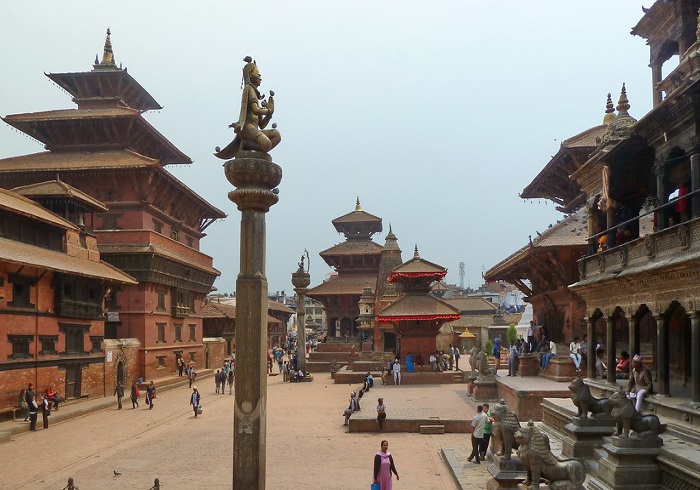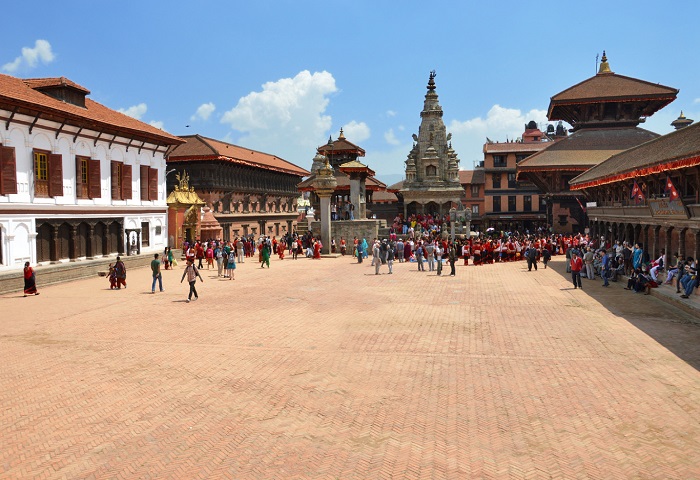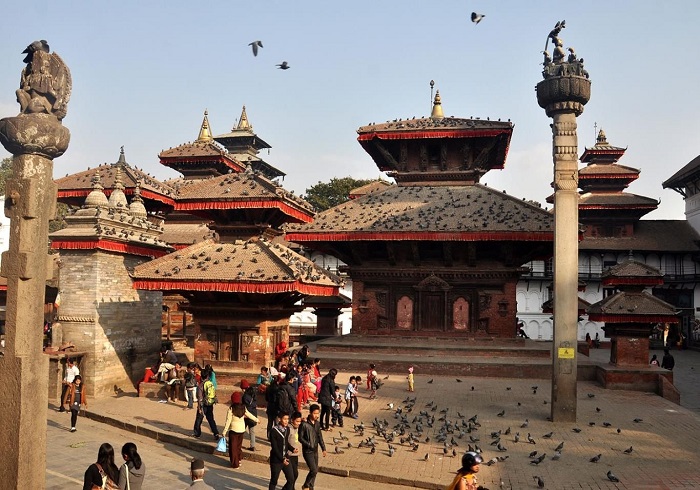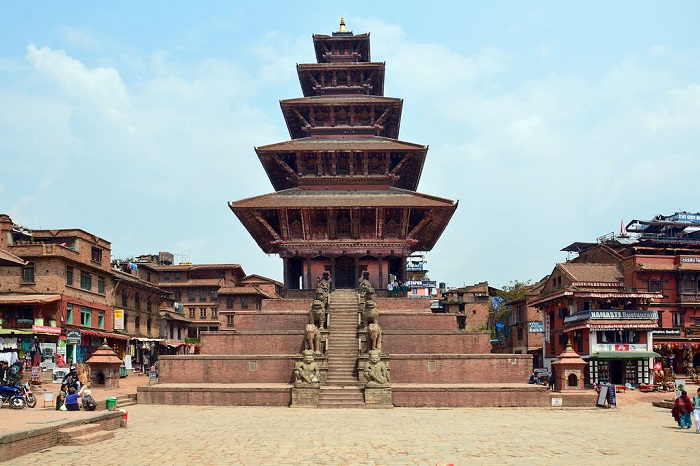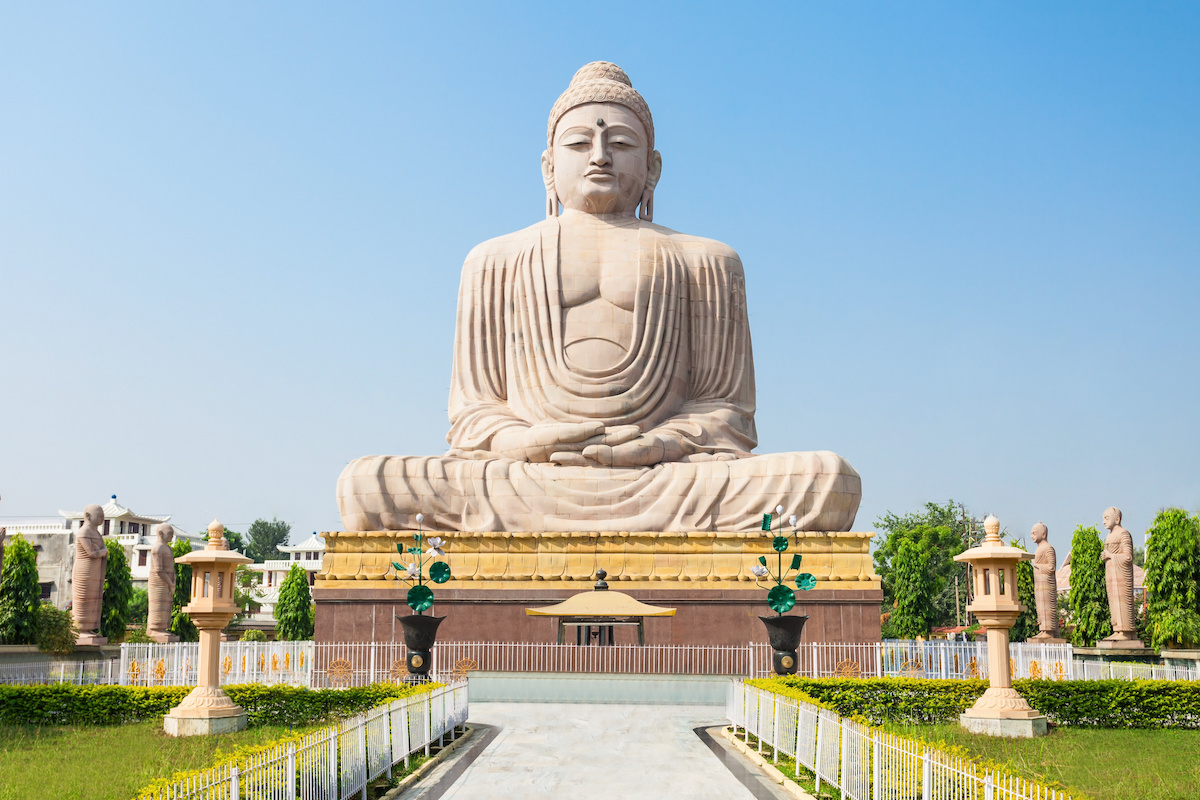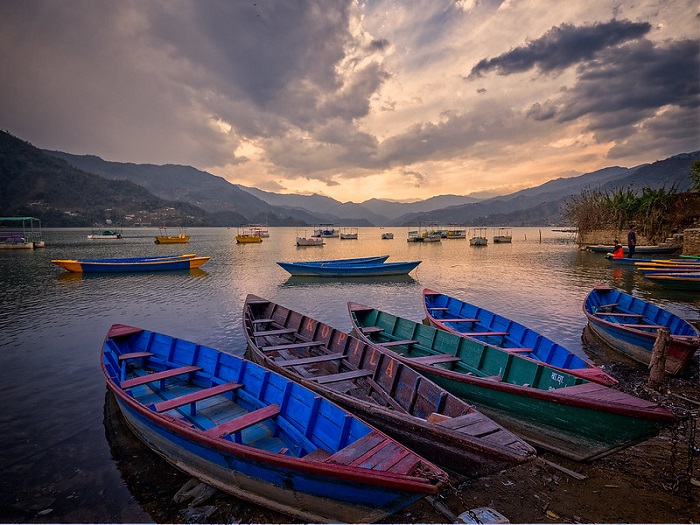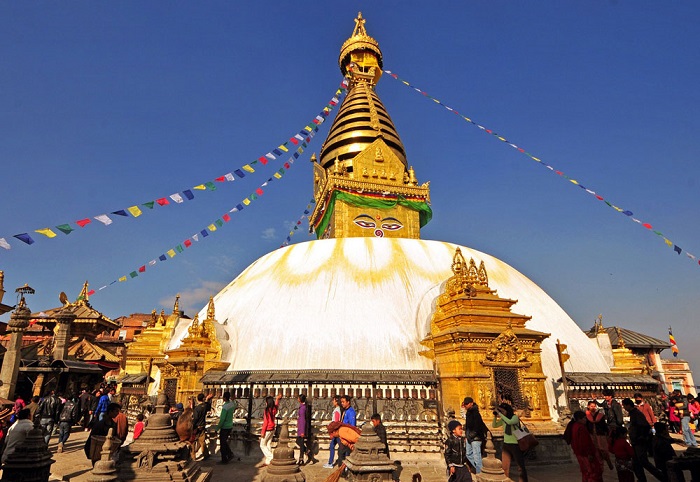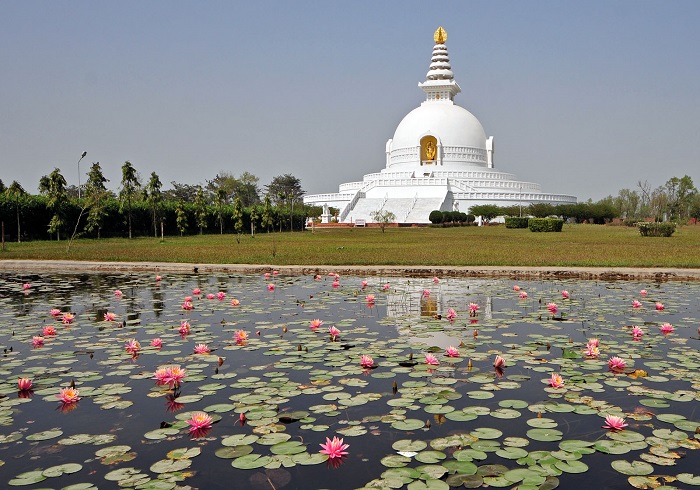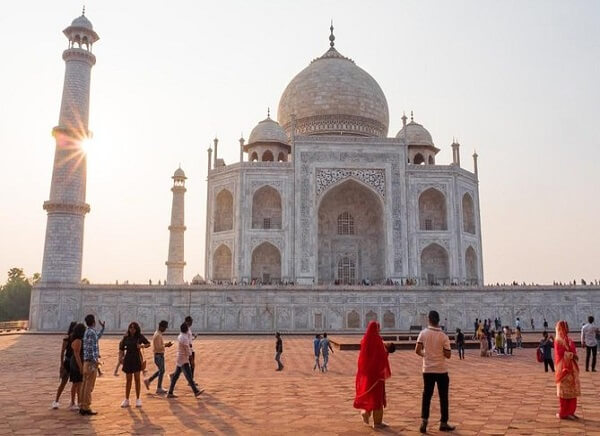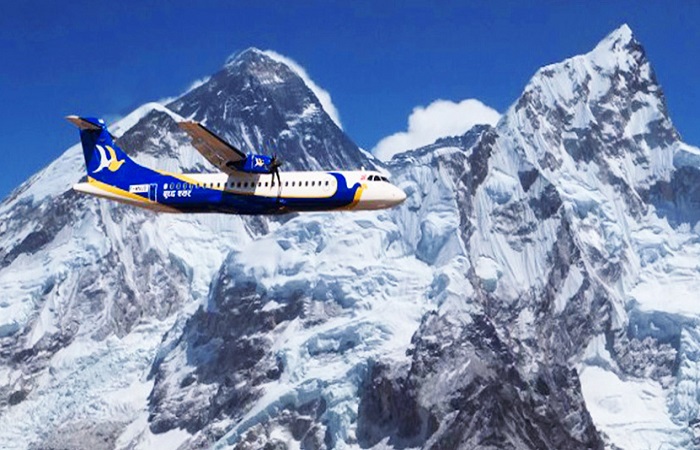20 Most Famous Temples in Nepal
Nepal boasts a distinct culture that is spectacular and unforgettable. The country is packed with shrines and temples that are not only sacred but are also known for its absolute beauty.
In case you want to add these religious landmarks to your itinerary, here is our list of Top 20 Famous Temples in Nepal that should be on your bucket list:
1. Pashupatinath Temple, Kathmandu
The much revered Pashupati Temple is one of the oldest in Nepal. The pagoda style temple stands tall on the banks of the River Bagmati and has a history dating back to 400 AD. Covering an area of 264 hectares, this place of worship is dedicated to Lord Shiva. The temple complex is huge and comprises of 518 structures.
The main temple is an architectural masterpiece and features cubic constructions and wooden rafters. There are four main doors wrapped in silver sheets and the roof is made from copper with gold coating. The main idol is a stone Mukhalingam (linga with one or more human faces) with the silver serpent. The idol has four faces facing four directions. Unlike other Shiva lingams, this idol in the Pashupati Temple is always dressed in its golden attire except during a devotional activity.

Every year, the temple draws hordes of Hindu pilgrim mostly elderly followers. They come here to meet death and getting cremated on the banks of the sacred Bagmati River that finally meets the holy Ganga. Open cremations are the norm and the rituals taking place here are powerful and gut-wrenching. Watching the cremations by the river bank is one of the must-do activities.
Note : Non-Hindus are strictly forbidden to enter the temple.

Get Complete Info : About Pashupatinath Temple
Suggested Tour : 3 Days - Nepal Tour
2. Changu Narayan Temple, Bhaktapur
Reputed as the oldest temple in Nepal, the Changu Narayan Temple was built during the reign of the Lichhavi Dynasty. The temple is dedicated to Lord Vishnu in the form of Narayan. The two-tied pagoda styled temple features four doors that are guarded by stone lions. There is a gigantic statue of Garuda in the west of the temple. The statues of King Bhupatindra Malla and his queen are positioned in front of the temple entrance. However, the highlight of the Changu Narayan Temple is the Narasingha (half lion and half man) statue. The monument is adorned with intricate carvings that are over 1500 years old. The temple was badly affected during the 2015 earthquake and the restoration is under progress.
A walk around the temple will take you back in time. If you are a history buff, the Changu Museum should be on your list. The museum showcases traditional rural life. You can witness a 500 years old dish washing rack and around 225-year-old rice grain. Other objects include a cow’s gallstone, a raincoat made from leaves and rhino skin shield.

Read More : 12 Interesting Facts of Nepal Country
Suggested Tour : 4 Days - Nepal Tour
3. Guhyeshwari Temple, Kathmandu
Guhyeshwari Temple is one of the Shakti Peeths located very close to Pashupati Temple. In the 17th century, King Pratap Malla had constructed this beautiful temple on the banks of River Bagmati. Guhyeshwari Temple represents the divine feminine power that Devi Parvati embodies. It is also popular among the Tantrik worshippers. This is a pagoda-style temple that boasts a unique interior. The central shrine is a flat figure of the goddess parallel to the ground and the puja is usually done by bowing down. There is also a pond next to the idol, known as Bhairav Kunda. During the Dashain festival, devotees from different parts of Kathmandu come here and pray to the goddess.
Pashupati and Guhyeshwari temples together symbolize the power of Shiva and Shakti. The aura surrounding the temple is strong and powerful. Pilgrims believe in the existence of divinity and come here with the hope of a better life.
Note : Non-believers of Hinduism is prohibited from entering the temple.

Read More : 11 Things That Will Make You Fall In Love with Nepal
Suggested Tour : 5 Days - Nepal Tour
4. Dakshinkali Temple, Kathmandu
As the name suggests, Dakshinakali Temple is dedicated to Goddess Kali. It is one of the main temples in Nepal located close to the village of Pharping. The temple is dedicated to the fierce Hindu Goddess ‘Kali’, the incarnation of Devi Parvati. It was built in the 14th century during the rule of the Malla King. The main shrine was an image of the deity carved out of the stone. The temple looks simple and is seated amidst a serene environment. In order to satisfy the blood lust of the goddess, animal sacrifices especially cockerels and male goats are made every Tuesday and Saturday. A large number of devotees gathers around the temple to witness the sacrifice.
During the 15-day Dashain festival, thousands of pilgrims flock the temple. It is one of the most popular Hindu festivals. The temple is decorated with bright lights and the mystic aura can be felt in the smell of incense stick and reverberating chants. The temple authority also arranges grand feast and it is the best time to visit this sacred place of worship.
Note : Non-believers of Hinduism are not allowed to enter the temple and perform religious rituals.

Also Read : Top Things to Do in Kathmandu
Suggested Tour : 6 Days - Nepal Tour
5. Manakamana Temple, Gorkha District
Located in the Gorkha District, the 17th-century Manakamana Temple is dedicated to Durga Bhawani. This religious landmark is perched atop a hill and enclosed by a quaint village. It was built during the reign of Ram Singh, the legendary Gorkha King. It is believed if someone worships the goddess with a pure heart, his or her wish gets fulfilled. With stunning architectural beauty, the four-storied Manakamana Temple stands on a square pedestal with pagoda styled roof. The temple can be reached after a 10-minute gondola ride from Kurintar and each carrier can carry 6 persons at a time.
Pilgrims worship the goddess with offerings of dresses, colours, flowers and scents. Sacrificing animals is an age-old tradition and during festivals, devotees stand for 5 to 10 hours to witness the sacrifice. Pilgrims make resolutions and when their wishes are fulfilled, they again visit Manakamana temple to show gratitude to the Devi.
Note : Non-Hindus are restricted to enter the temple and worship the Devi.

Also Read : Top 10 Exciting Things to Do In Nepal
Suggested Tour : 7 Days - Nepal Tour
6. Dantakali Temple, Vijapur Hill
Surrounded by the mesmerizing Vijapur Hills, the sacred Dantakali Temple is one of the major Shakti Peeths. According to Hindu mythology, this is the place where Sati Devi’s (Lord Shiva’s wife) teeth have fallen. Hence, Dantakali Temple holds a major religious significance to the followers of Hinduism. The temple is built with brick and cement and features a metal pinnacle on top. The holy shrine is a small silver-plated rock that is regarded as Devi Sati’s tooth.
Numerous devotees flock the temple on the occasion of Navratri. On Maha Ashtami (the 8th day of Dashain), goat sacrifices take place within the temple premise which is a rare yet intriguing sight. Dantakali temple is frequented by pilgrims from every nook and crannies of Nepal as well as India. The majestic sight of the sloping roofs of Dharan from the top looks no less than paradise.

Also Read : A Complete Guide to Nepal for Travelers
Suggested Tour : 8 Days - Nepal Tour
7. Budhanilkantha Temple, Shivpuri Hills
Nestled at the foot of the Shivpuri Hills, Budhanilkantha Temple holds a high religious significance not only in Nepal but also across Southern Asia. It houses the biggest stone sculpture of Lord Vishnu lying on a bed of serpents. The 5 metres long statue is positioned in a lake that represents the cosmic sea. The statue is a sculptural marvel that is carved on a single block of basalt stone. The ‘Sleeping Vishnu’ has a history dating back to the 5th century. The statue was discovered by a farmer during the rule of the Malla Dynasty. The delicate artwork on the sculpture is a feast to the sore eyes. Hence, this place of worship attracts heritage buffs along with Hindu pilgrims.
Thousands of pilgrims flock the temple on the occasion of Haribondhini Ekadashi that takes place between October and November. A large fair also takes place on the auspicious days which marks the awakening of Lord Vishnu from his long sleep. If you are planning to visit the Budhanilkantha Temple, combine the trip with Shivapuri National Park located just above it.
Note : Non-Hindus are not allowed to visit the temple except for Nepali Buddhists. Cameras and mobile phones are strictly forbidden near the pond area.

Also Read : 10 Major Festivals In Nepal You Must Experience
Suggested Tour : 4 Days - Kathmandu Nagarkot Tour
8. Bindabasini Temple, Pokhara
Seated in one of the hot tourist destinations of Pokhara, the Bindabasini Temple is one of a kind. This sacred landmark is the ideal spot to embrace calmness in the bustling region. The temple is nestled on a hilltop at an elevation of 3000 feet along the Machapuchare and Annapurna Ranges. It is dedicated to Ma Durga, who is often regarded as the guardian deity of Pokhara. She is worshipped here in the form of Bhagwati, the fierce goddess. In order to appease her, animal sacrifices take place on Tuesdays and Saturdays.
It is believed, that the pagoda-style temple was built by King Khadag Bum Malla after Devi Durga instructed him to do so. The central shrine is a Saligram that symbolises the goddess. The auspicious occasion of Dashain witnesses a large number of visitors from Nepal as well as India. This stunning temple is enclosed by lush greenery and visitors come here to spend time amidst the gorgeous panorama and absorb the breathtaking views. A trip to the Bindabasini Temple can be combined with a visit to the Old Bazaar and the Phewa Lake.

Also Read : A Complete Guide to Travel from Delhi to Kathmandu
Suggested Tour : 9 Days - Central Nepal Tour
9. Swayambhunath Stupa, Kathmandu Valley
The very ancient Swayambhunath Stupa rests on a hillock in the Kathmandu Valley. It is one of the most admired temples and a great place to soak up the panoramic views of the city. It is one of the oldest as well as the holiest Buddhist stupas in the region. According to some inscriptions, the stupa was built by King Manadeva in 460 A.D. The complex has a stupa, some shrines and temples that belong to the Licchavi period. It is an architectural marvel in the shape of a white dome that signifies our planet, earth. And the tower-like structure on top represents the 13 stages of nirvana. On each side of the stupa is the ‘Paanch Buddha’ statue that represents the five different qualities of Lord Buddha. The main stupa also houses a number of artefacts belonging to the bygone era.
Swayambhunath Stupa is frequented by tourists and pilgrims throughout the year. It is believed that the glory of the Kathmandu Valley started from here. After visiting the stupa, you can also explore the Harati Devi Temple which is a part of Swayambhunath Stupa complex. And if you are looking for some relaxation after the very touristic trip, take a walk along the Swayambhu Circle Road.

Get Complete Info : About Swayambhunath Temple
Suggested Tour : 10 Days - Nepal Tour Packages
10. Muktinath Temple, Jomsom
The iconic Muktinath Temple sits on the lap of the snow-covered mountains at an altitude of 3710 metres. The pagoda styled structure in such a picturesque location is a visual treat. According to Tibetan Buddhists, this temple holds the reputation of being one of the 24 tantric places. Hence, it has a lot of significance to the ‘Dakinis’ (sky dancers). The main shrine of Sri Muktinath is one of the holy shrines known as Svayam Vyakta Ksetras. The idol is made from gold which is tall enough to be compared to a human. The worship is conducted in the presence of a Buddhist monk and pilgrims are expected to make a religious offering to the deity.
Muktinath Temple is the best place to learn about Tibetan culture and traditions in Nepal. If you are planning to visit Muktinath Temple, you can easily combine the trip with a few other places in Jomsom which includes the view tower and the Mustang Eco-Museum. Jomsom is also a great place to get a closer look at the Thakali culture.

Also Read : Most Famous Things To Buy In Nepal
Suggested Tour : 6 Days - Kathmandu Chitwan Nagarkot Tour
11. Janaki Mandir, Janakpur
Located in the Mithila Region, the massive white temple of Janakpur is dedicated to Devi Sita. It is one of the biggest temples in Nepal that is frequented by tourists from other parts of the country as well as India and Sri-Lanka. The auspicious occasions of Ram Navami, Dashain, Diwali and Holi are celebrated with much fervour. Built in the year 1910 by Queen of Tikamgarh, this temple is an architectural marvel.
The grand Janaki Temple looks like a spectacular palace and features domes, verandas and pillars. It is a fusion of Hindu, Koiri and Mughal architecture and feature intricate windows with coloured glass. There are a total of 60 chambers adorned with pretty carvings and beautiful paintings. The statue of Devi Sita stands in the inner sanctum and t is flocked by devotees throughout the year. This temple is particularly popular among women who wear colourful saris and visit the temple. At the back of the temple complex, there is a small museum which tells the epic story of Lord Rama and Devi Sita.

Also Read : Top 7 Haunted Places in Nepal
12. Baglung Kalika Temple, Baglung
Baglung Kalika Temple is one of the holiest Kali temples in Nepal. Popularly known as Kalika Bhagwati Temple, it is located deep inside the forest right above the Kali Gandaki River. Kali is often considered as one of the most powerful forms of Devi Durga and the consort of Lord Shiva. It is an ancient temple constructed by Pratap Narayan but it was renovated in the year 1990.
Within the complex, there are a number of other temples as well. Apart from Hindu devotees, Tantric from different parts of the globe visits the temple to achieve knowledge. During Navratri celebration, devotees from around Nepal come here to celebrate the occasion and perform puja to please the goddess. The devotees perform rituals to win legal suits, win their loved one or gain victory over their enemies. Marriages are also conducted inside the temple premises with a belief that the couple will be blessed for a lifetime.

Also Read : 10 Best Places to Visit In Nepal In Winter Season
13. Maula Kalika Temple, Gaindakot
Nestles in the Gaindakot town, the much revered Maula Kalika Temple is sacred to the Hindus. At an altitude of 1841 feet above sea level, this temple stands erected on top of the Maula Hill in the northern side of Gandaki River. This temple has a history dating back to the 16th century when the ruler of Palpa made an offering site dedicated to Goddess Kalika or Kali. According to Hindu Mythology, Goddess Kali is the incarnation of Devi Parvati and symbolizes power, energy and new beginning. The temple has been renovated several times and the present temple was built in the 1990s. During festive occasions especially Dashain, hordes of devotees visit the temple from neighbouring countries as well as other parts of Nepal.
Maula Kalika Temple is one of the most popular hiking spots for intrepid travellers. Climbing numerous stairs in order to reach the final destination seems exciting for many. The majestic view of Gaindakot and Bharatpur town from the hill is enthralling and conjures amazing memories. It is ideal to visit the temple early in the morning so that you can absorb the beauty of the rising sun from the top. You can also include Devghat and Chitwan National Park in the itinerary as these spots are close by.

Nepal Travel Guide :
- Best Time to Visit Nepal
- How to reach Nepal
- Top Things to do in Nepal
- Tourist Attractions in Nepal
- What to Eat in Nepal
14. Mayadevi Temple, Lumbini
Mayadevi Temple is one of the most ionic Buddhist temples situated in the UNESCO declared World Heritage Site of Lumbini. It is the birthplace of Lord Buddha and attracts his followers from all around the globe. This temple is considered sacred because the archaeologists have identified the exact site where Queen Maya Devi gave birth to Gautam Buddha. The Mayadevi Temple is considered the heart of Lumbini and showcase diverse architectural style. There is a brick pavilion that safeguards the temple ruins and just beside the ruins, there is a holy pond where Maya Devi had taken a bath before giving birth to the Lord.
The Lumbini Gardens brings harmony through worship and devotion. If you are an explorer willing to learn about the sacred places in South Asia, Mayadevi Temple should be on your list. Pilgrims come here to pray, meditate and feel enlightened. There is a spiritual aura that revolves around this ancient site and you must visit it to believe it.

Also Read : Best Things To Do In Lumbini, Nepal
Suggested Tour : 11 Days - Nepal Tour
15. Bajrayogini Temple, Sankhu
The Tantric temple of Bajrayogini was built in the 16th century by King Pratap Malla. The temple worships the goddess of Bajrayogini, one of the most ferocious of the tantric goddesses. This is a 3-storied sanctuary with a gold plated entrance that is located on the shores of River Sali. However, most of the temple is damaged after the 2015 earthquake.
In the month of Magh, hundreds of devotees take a holy bath in the river and worship the goddess. The main idol has two hands, one holding a lotus and the other holding a sword. She wears heavy clothing and jewellery. The entire region is a treasure trove of small temples and caves that looks intriguing and has an old world charm. There are a number of yagya kundas where offerings are made to the God of Fire.
Bajrayogini Temple unravels the sheer magnificence of the Hindu as well as the Buddhist culture. Take a stroll around the temple and admire the elegant work. No wonder, the pagoda-style structure adorned with beautiful sculptures is a feast to the sore eyes. Apart from exploring the place of worship, you can also take the lesser known path to hike up through the region of Sankhu.
16. Boudhanath Stupa, Kathmandu
The much revered Boudhanath Stupa is located at a distance of 11 kilometres from the city centre. The 36 metres stupa is one of the tallest in entire South Asia. With countless monasteries enclosing it, Boudhanath is the centrepiece of Tibetan Buddhism in Nepal. The stupa is shaped like a mandala and looks more like the Gyantse of Tibet. The white-washed dome is an architectural splendour and perfectly complements the all-seeing-eyes of Gautam Buddha that symbolizes awareness. The first stupa was built around AD 600 and it was renovated by the Licchavi rulers in the 8th century. The Tibetan merchants have also rested and offered prayers here for several centuries.
This stupa is a UNESCO listed World Heritage site and is one of the main attractions in Kathmandu. Here you can also explore the numerous other monasteries surrounding Boudhanath Stupa and appreciate the spectacular interiors. You can even visit the Ghyoilisang Peace Park which is a peaceful park with a massive sculpture of Guru Rinpoche in the middle. Make sure to wander along the Phulbari Street which is lined with food stalls serving delicious dishes.

Read More : 10 Most Famous Buddhist Temples In India
Suggested Tour : 12 Days - India Nepal Buddhist Tour
17. Tal Barahi Temple, Pokhara
Standing in the heart of the Phewa Lake, the two-storied pagoda styled Tal Barahi Temple is dedicated to Devi Barahi, an incarnation of Durga Ma. Goddess Barahi symbolizes Shakti and destroys all the evils around. The temple was built during the reign of King Kulmandhan Shah and holds significance to both the Hindus as well as the Buddhists. The grand structure is made from stone, wood and brick and can accommodate a large number of devotees.
In order to reach this place, visitors have to take a boat ride along the Phewa Lake. The ride is enjoyable and the scenic beauty is admirable. Hence, Tal Barahi Temple is not only suitable for pilgrims but it is also a safe haven for heritage lovers and nature enthusiasts.

18. Devghat Dham, Tanahun District
Devghat Dham is one of the most religious and cultural centres in Nepal that is located at the confluence of Krishna Gandaki and Seti Gandaki Rivers. It is believed that several gods and goddesses visit Devghat from time to time. As a result, taking a holy dip in this region is considered sacred and people who die here rest in peace forever. The great Saligram stone has been found here which doubles the importance of Devghat. No wonder, this place is a religious and spiritual haven.
Devghat Dham has great historical significance. Remains of ancient gods that are more than 400 years old can be found here. There are countless temples located in this region including the Ram Temple, Siddhiganesh Temple, Harihar Ashram, Aghori Ashram, Galeshwor Ashram, Pashupati Temple and so on. Thus, Devghat is flocked by devotees as well as tourists throughout the year.
19. Chabdi Barahi Temple, Chabdi Barahi
Located in the Tanahun District, the Chabdi Barahi Temple has a religious significance dating back to the centuries. According to Hindu mythology, Satyavati was born in this spot in the form of a fish. Hence fish plays an integral role in this temple. The temple complex has a number of idols belonging to different gods and goddesses. It is believed that if you visit the temple on foot, all your wishes would be granted.
There is only one priest who performs all the religious rituals in the temple complex. Numerous devotees visit this sacred structure during the auspicious occasion of Dashain as well as on the first day of the year. In order to please the goddess, goat sacrifices are made in the temple. However, no sacrifices take place on the occasions of Ekadashi, Aunsi and the Shravan month.
Note : Menstruating females and their husbands are strictly prohibited from entering the temple.
20. Panchakanya Temple, Dharan
Panchakanya Temple is one of the oldest temples in Dharan. This temple is located amid dense forest and you can witness numerous monkeys wandering around. This religious site has two temples and one has intricate carvings and statues.
The religious landmark is dedicated to the Panchakanyas, the five legendary heroines who belong to the Hindu epics. They are Kunti, Ahalya, Tara, Draupadi and Mandodari. Panchakanya Temple is not frequented by visitors and requires renovation.
These sacred temples are an epitome of the rich cultural heritage in Nepal. No wonder, they make the country proud on the global map and also help in the economic growth and development.


